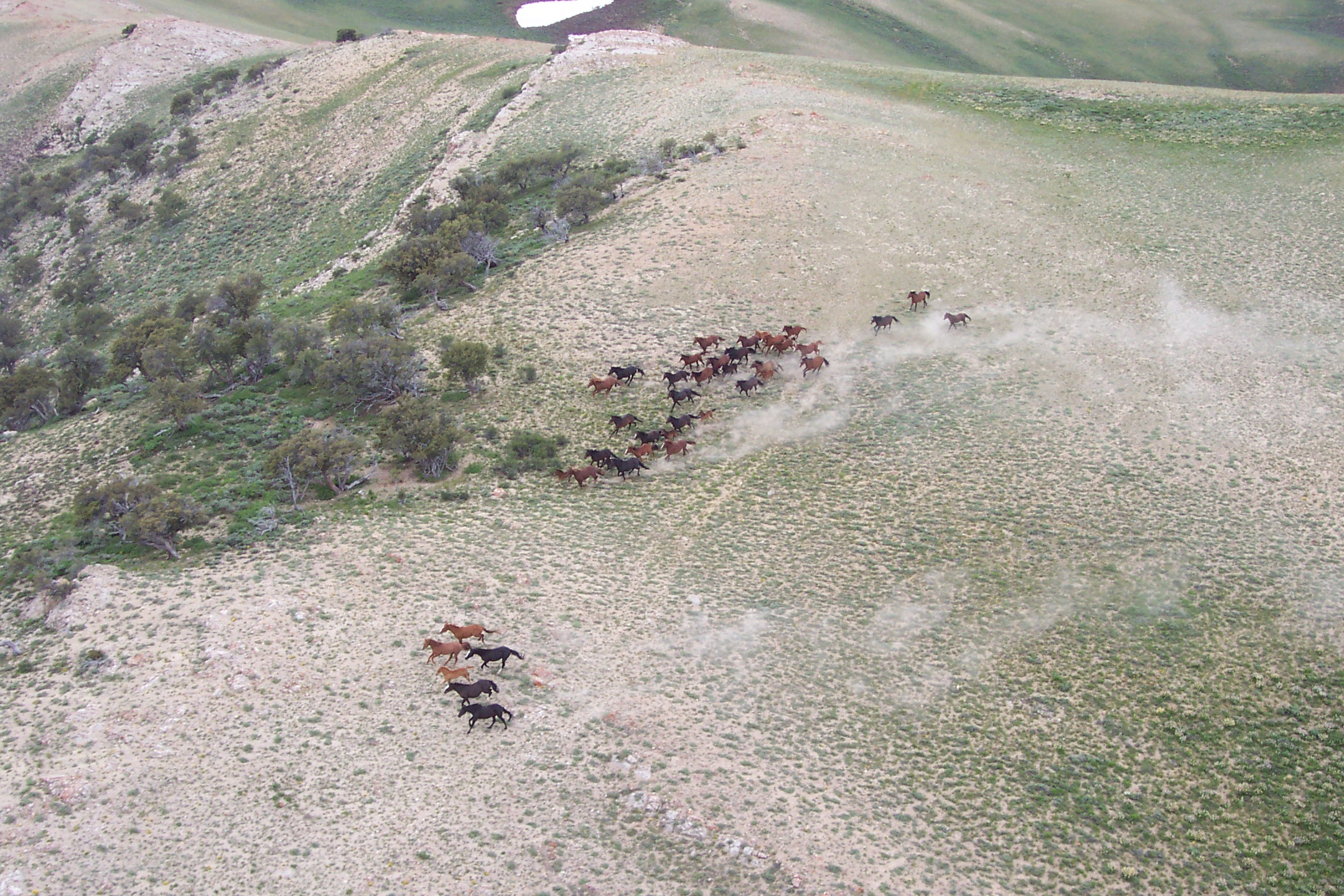The BLM’s 2003 Strategic Research Plan identifies research priorities for the Wild Horse and Burro Program. Included are: health and handling, fertility control, population estimation and modeling, genetic conservation, habitat assessment and setting population goals. The components of fertility control and population estimation have been implemented and research is being conducted. Genetic diversity of wild horse and burro herds is also being evaluated. Other research programs are being implemented as needed.
| How many horses are there? Counting horses from a moving aircraft several hundred feet above the ground isn’t easy. Add tree cover, rugged terrain, and poor weather, and the job becomes even more difficult. To address this challenge, the BLM is working with the United States Geological Survey (USGS) to research and implement population estimation techniques based on the best available science. |
|
Goal: Use the best science available to manage wild horses and burros.
Objective 1: Apply the best available methods and techniques to estimate wild horse and burro population size and genetic diversity; reduce wild horse and burro population growth rates; assess habitat conditions; establish AML; and assess wild horse and burro health and welfare. Pursue research that will improve these methods and techniques.
Actions:
Continue existing research and explore new research opportunities for:
Fertility control and sterilization of both male and female wild horses and burros.
Wild horse and burro population estimation techniques.
Continue monitoring and explore new research opportunities related to wild horses and burros:
Health and welfare.
Genetic diversity.
Habitat conditions.
Given a reasonable expectation of safety, implement promising management techniques as soon as they are practically, economically, and legally feasible even though research may not be absolutely conclusive.
Objective 2: Review and evaluate current science applicable to wild horse and burro management.
Actions:
Commission the National Academy of Science, National Research Council (NRC) to review the three earlier reports (1980, 1982, and 1991) and make recommendations on the best science for wild horse and burro management and for needed new research.
Review and update the cooperative research strategy between the BLM and the U.S. Geological Survey (USGS) regarding wild horse and burro research priorities.
Review historic recommendations of the National Wild Horses and Burros Advisory Board regarding research, determine whether these recommendations were implemented, are no longer relevant, or need to be pursued.
Objective 3: Utilize current rangeland health information to support decisions that affect the management of wild horse and burro herds and their habitat.
Actions:
Use the best available science when conducting rangeland health assessments, evaluations, and habitat monitoring (utilization, trend, actual use, and climate data) in order to verify AML ranges and determine progress toward attainment of Land Health Standards and HMA-specific management objectives.
Incorporate adaptive management approaches to effectively manage wild horse and burro herds and their habitat.
Closely coordinate wild horse and burro habitat monitoring with other resource program’s monitoring activities.
Determine the need for habitat improvements to assist with animal distribution and forage availability.
